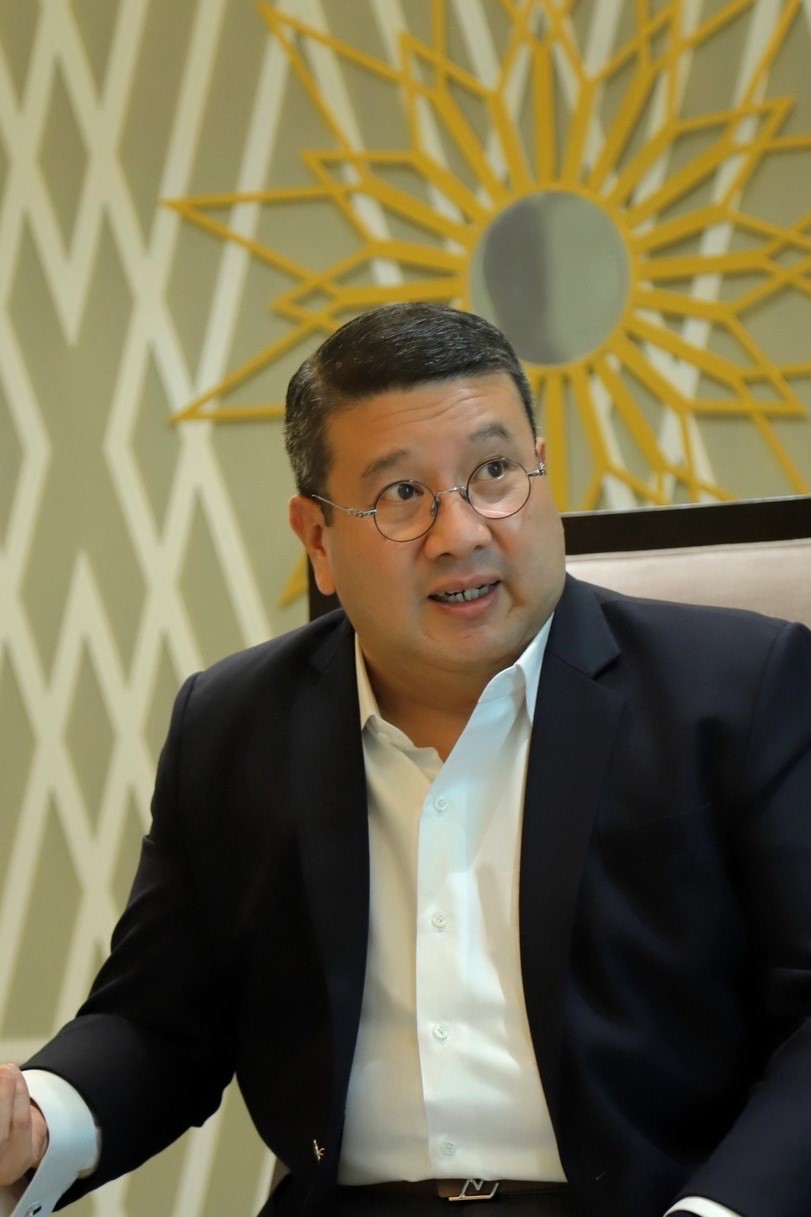Every year in Thailand, more than 12,000 cases of young offenders are reported. This number appears to be on the rise, influenced by the evolving landscape of technology and its impact on social and economic development. In an interview with True Blog, Pol. Lt. Colonel Wannapong Kotcharag, Director-General of the Department of Juvenile Protection and Observation, sheds light on the current situation of young offenders in Thailand.
According to the Director-General, 90% of young offenders are males. Approximately half of them is involved in drug-related offenses. Another 15% are linked to theft, while 10% are associated with offences against life and body. The remaining cases involve violations of traffic laws, disturbances to public order or morality, or offences related to firearms.

“These statistics indicate that young offenders are not inherently bad. A significant number of them enter the justice system due to drug-related problems, and approximately 65% of those involved in drug cases come from broken families,” the Director-General of the Department of Juvenile Protection and Observation states. “Young people’s behavior is influenced by various factors. Some turn to crime due to external factors like changes in their economic and social circumstances or living conditions. Others engage in unlawful activities due to internal factors, often driven by their emotions to act impulsively. The influence of delinquent peer groups also plays a significant role in these young people getting involved in criminal activities.”
The Department of Juvenile Protection and Observation, a key entity in Thailand’s juvenile legal system, is primarily responsible for looking after and helping young convicts. The department is firmly committed to upholding children’s rights in accordance with the United Nations Convention on the Rights of the Child, which Thailand ratified on February 12, 1992. They also adhere to the Juvenile and Family Court and Juvenile and Family Case Procedure Act B.E. 2553 (2010) and the Administration of Juvenile Offenders Rehabilitation Act B.E. 2561 (2018).
“Children and youth, defined as individuals under 18, must have their rights protected under laws governing juvenile offenders. These laws emphasize their development, rehabilitation, and correction over punitive measures,” he states.
He adds that giving opportunities is at the heart of every juvenile-case procedure. Courts have hardly meted out an imprisonment term against children. In most cases, juvenile offenders are just detained before and after court verdicts for the purposes of protecting children and lowering the risk of reoffending. Young convicts are normally sent to any of 21 juvenile training centers for their rehabilitation. The duration of training varies from person to person. During the training, they are trained in four aspects: physical training, emotional training, mental training, and vocational training. Juvenile offenders are given mandatory education and basic hygiene care. If any of these young convicts prove that they progress well in the training, the term of their training can be reduced. Courts may approve the reduction or release them from the center anytime.
“At the training centers, children enjoy the same rights as their peers elsewhere. They have access to education, healthcare, and opportunities for personal development. The only distinction lies in their freedom. But their freedom can be restored if they show significant improvement,” Pol. Lt. Colonel Wannapong explains.
Reoffending Rate Remains a Cause for Concern
A crucial measure of success in the juvenile justice process is the re-arrested rate. After children transition out of the care of the Department of Juvenile Protection and Observation, some unfortunately commits new offenses. The re-arrest rate had remained stagnant, but in recent years, there has been a promising trend of gradual decline. Overall, in the first year following their release, 25% of these young individuals reoffend. This rate escalates to 35% in the second year and further increases to 40% in the third year. The majority of reoffences are related to narcotics.

“While it appears that the re-arrest rate of juvenile offenders is on a downward trend, it still remains at a concerning level. This is likely because drug problems continue to be a serious issue, and our society is facing growing social and economic challenges. In fact, the number of juvenile cases is increasing faster than the overall crimes. Family issues are a major reason for this, underscoring the need to strengthen the family institution to prevent young people from engaging in unlawful activities,” Pol. Lt. Colonel Wannapong emphasizes. “Some children even told the officials that they are reluctant to return to their former environments because they fear repeating their mistakes if placed back in those surroundings.”
The Department of Juvenile Protection and Observation places its primary emphasis on providing guidance, mental rehabilitation, and helping young individuals develop a more positive and constructive way of thinking. The objective is to raise awareness among them and help rectify behavioral issue and to provide support to youth who grow up in challenging environments.
In addition to adhering to the National Narcotics Board’s rehabilitation guidelines, the Department of Juvenile Protection and Observation has incorporated forensic science and drug tests into its procedures. These tests can detect narcotics in individuals’ bodies, even if drug abuse occurred as far back as three months ago. It’s important to note that these scientific tools are not used to assign blame but rather to monitor and assess young people’s commitment to overcoming drug use.
The inclusion of forensic science in their operations has proven effective in significantly reducing the likelihood of young offenders returning to drug abuse. With this approach, the department has shown its ability to use modern tools to support positive behavioral changes, ultimately enhancing public trust in their efforts.
Social Reintegration
International research indicates that stable employment significantly reduces the likelihood of reoffending and also contributes to societal well-being. Consequently, the Department of Juvenile Protection and Observation is dedicated to equipping young individuals with vocational skills. They offer personalized training based on each person’s interests and the demands of the job market.
The Department of Juvenile Protection and Observation aims to offer highly practical training to the youth under its supervision. In partnership with the private sector and civil society, the department established private training centers to bridge young convicts with the broader community. These centers send a clear message to young individuals that society never abandons them and is willing to offer them opportunities.
“Through these collaborations, we recognize the potential within these young individuals. For instance, they work at a café, complete their shifts at 5 pm, and then attend classes, demonstrating their discipline and patience. Moreover, we encourage them to volunteer on Saturdays. These indicators showcase their determination to bring positive changes to their lives and are taken into account when the courts review the possibility of reducing their training duration. If the reduction is approved, they can regain their freedom and reintegrate into society. I believe they have the potential to grow and make meaningful contributions to society in the future,” Pol. Lt. Colonel Wannapong states.

Reducing Reoffending
The Department of Juvenile Protection and Observation recently joined forces with True Corporation’s Net for Living Project to educate young individuals on safe internet usage and how to build an income stream online. With digital literacy, they will be better equipped to navigate the digital world and protect themselves from online threats. Furthermore, these skills can empower them to make valuable contributions to the nation’s economy and society in the years to come.
While juvenile observation and protection centers maintain strict communication-control measures, the department takes care to ensure that these measures do not hinder the development of these young individuals. For example, through the partnership with Net for Living, young individuals under the department’s care receive training based on a modern and relevant curriculum, led by Net for Living coaches with a proven history of success in social initiatives.
“If we let fear hold us back, we wouldn’t achieve anything. Some tasks require the courage to move forward. We firmly believe that our screenings mechanism can help prevent problems to a certain degree. Above all, digital literacy and skills will greatly benefit these young individuals once they leave our centers. While providing this training involves some risks, I’m confident that we can manage those risks effectively. In fact, we even organize e-sport competitions, so kids with an interest can pursue a career in e-sports in the future,” Pol. Lt. Colonel Wannapong explains.
The Department of Juvenile Protection and Observation is committed to equipping young individuals with digital skills, aiming to provide them with the means to earn a living online. With financial stability, former young offenders can confidently reintegrate into society and reduce the risk of reoffending.
“Juvenile observation and protection centers aren’t magic fixers. We can’t guarantee complete transformation. Society also has a role in helping these young individuals rehabilitate. If we all work together by offering opportunities and reducing stigma, these young individuals can find their meaningful roles in society,” Pol. Lt. Colonel Wannapong says.





